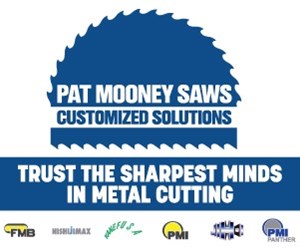Ultrasonic Technology Poised for Advance into General Machining
Formerly applied only to exotic materials such as ceramics and gemstones, ultrasonic machining has been adapted to more general manufacturing. Titanium and CFRP are two workpiece materials in which the counterintuitive technology shows promise.
Could it be that a significant share of North American machining is simply waiting for a little oscillation in order to improve?
Jeff Wallace, general manager of the U.S. national engineering group with DMG MORI, has seen hints that this might be the case. He is a part of the group involved with exploring and advancing the machine tool builder’s “ultrasonic machining” technology, in which the tool in a machining center is driven through a high-frequency oscillation in the Z direction as it cuts. Ultrasonic machining in the past has used special abrasive tools, but the company has recently proven that this tooling is not needed. Conventional, off-the-shelf milling cutters and drills have been used with this ultrasonic oscillation to realize process improvements including a tripling of the metal removal rate in machining titanium 6Al4V.
The notion that high-speed oscillation might be helpful is certainly counterintuitive, Mr. Wallace admits. Indeed, it’s counterintuitive in all kinds of ways. First, machine tool users everywhere recognize vibration as being harmful to the cut. But the oscillation here is not out-of-control vibration like resonance, he notes—this motion is driven and controlled. Second, those same machine tool users recognize that vibration (even if it begins as controlled oscillation) is detrimental to the spindle bearings. But the bearings are not affected by this oscillation, Mr. Wallace says, because DMG MORI’s technology drives the tool using a head like a toolholder that isolates the movement from the spindle.
Finally, an oscillation of the cut would seem as though it would harm the tool, particularly a milling tool. Doesn’t rapidly raising and lowering the tool while it is cutting have a jackhammer-like effect upon the edge? Doesn’t this compromise tool life?
No, he says, because “hammering” is not the right analogy. In ultrasonic machining, the tool oscillates through such a small amplitude (10 microns or less) that the cutting edge remains in the material, and the force and engagement remain relatively constant. Thus, rather than compromising tool life, tool life is enhanced. Why is not known for certain, but the working theory is that oscillation protects the tool by preventing microwelding of the material to the cutting edge. Far from hammering, the oscillation is helping.
In fact, users have a choice what kind of help they want the ultrasonic machining to deliver—what benefit they most value. Mr. Wallace says, “The user can keep cutting conditions constant and go for an increase in tool life from ultrasonic. Or, the other option is to maintain the tool life that has been established, but achieve this life in the context of more aggressive cutting.” In titanium alloy, the class of metal in which the technology has delivered the most benefit, that choice has been shown to come down to a 200 to 400 percent increase in tool life or a 200 to 300 percent increase in metal removal rate.
The technology originally came from Sauer, a German company acquired by then-DMG. Sauer developed the technology as a way to machine very hard and brittle materials that had been beyond the reach of conventional machining, including ceramics, glass and gemstone materials. For all of these, ultrasonic oscillation is used in conjunction with a tool covered in diamond grit to achieve precise, high-frequency abrasive machining. The resulting capability for fine-control CNC machining of previously unmachinable materials arguably remains ultrasonic machining’s most valuable application.
But in a more recent move with this technology, DMG MORI personnel in the U.S. ran standard tooling in an ultrasonic machining center to see what benefits could be won. They found that in the right circumstances, the performance of the machining process can improve significantly.
The beginning of this line of experimenting was about two years ago. Since then, the company has gone on to document process improvements in various machining applications, and has also developed an ultrasonic head adapted for the higher forces of conventional machining versus the earlier abrasive machining. Thus, the technology today is still available for machining of rare and exotic materials, but now it is also available in a separately engineered system for general machining. And while the latter is still a sufficiently new idea that it remains unfamiliar and even seemingly strange, Mr. Wallace says that, given the technology’s potential impact, he sees no reason why it will not spread to the point of eventually becoming commonplace in some sectors.
The technology has limitations, he says. It delivers its value in hard metals. “If you are machining 1045 steel, this probably isn’t going to help you.” And even in hard metals, he notes, effectiveness varies by application. In Inconel 718, the tool life improvement from ultrasonic machining is much less than in titanium—only about 5 percent. Interestingly, though, in Inconel, ultrasonic delivers a notable improvement in machined surface finish. The precise effect of ultrasonic machining in different materials at different conditions is an area of continuing exploration.
Another limitation relates to the physical limits of the oscillating head. The mass of the cutting tool directly determines the amount of energy needed to drive its oscillation. Right now, a 6-inch-long, ¾-inch-diameter carbide tool represents about the most massive cutter that ultrasonic machining can accommodate, he says. Indeed, that tool would employ the company’s recently-developed high-power head. Getting to even more powerful ultrasonic heads is another likely avenue of future development.
Meanwhile, the list of promising applications continues to grow. Here is another Mr. Wallace points to: carbon-fiber reinforced plastic (CFRP). When ultrasonic machining is applied to this composite used in aircraft and racecars, the result is machining without the delamination that is such a common problem with this material. The change in cutting action is the reason for the improvement, he says. The introduction of the up/down oscillation transforms the cutting mechanism and the tool edge from a tearing mechanism as the tool rotates to something more like micro-sawing of the material’s fibers.
One other interesting application relates to additive manufacturing, he says. A different DMG MORI technology is “hybrid” machine tools—machines able to apply material additively (that is, via 3D printing) within the same machine that also does CNC machining. One manufacturer’s application of this machine involves applying a metal alloy via additive manufacturing that is too hard to cut efficiently through conventional machining. The solution therefore proved to be ultrasonic—adding this capability delivered a process able to machine the additively applied metal. Mr. Wallace says the result is thus a machine that goes beyond even the established definition of hybrid. “It’s something like an ‘überhybrid,’ he says, combining not just two manufacturing technologies, but three.
Related Content
Lean Approach to Automated Machine Tending Delivers Quicker Paths to Success
Almost any shop can automate at least some of its production, even in low-volume, high-mix applications. The key to getting started is finding the simplest solutions that fit your requirements. It helps to work with an automation partner that understands your needs.
Read More6 Machine Shop Essentials to Stay Competitive
If you want to streamline production and be competitive in the industry, you will need far more than a standard three-axis CNC mill or two-axis CNC lathe and a few measuring tools.
Read MoreWhich Approach to Automation Fits Your CNC Machine Tool?
Choosing the right automation to pair with a CNC machine tool cell means weighing various factors, as this fabrication business has learned well.
Read MoreInverting Turning and Five-Axis Milling at Famar
Automation is only the tip of the iceberg for Famar, which also provides multitasking options for its vertical lathes and horizontal five-axis machine tools.
Read MoreRead Next
The Cut Scene: The Finer Details of Large-Format Machining
Small details and features can have an outsized impact on large parts, such as Barbco’s collapsible utility drill head.
Read More3 Mistakes That Cause CNC Programs to Fail
Despite enhancements to manufacturing technology, there are still issues today that can cause programs to fail. These failures can cause lost time, scrapped parts, damaged machines and even injured operators.
Read More.png;maxWidth=970;quality=90)
.jpg;width=70;height=70;mode=crop)
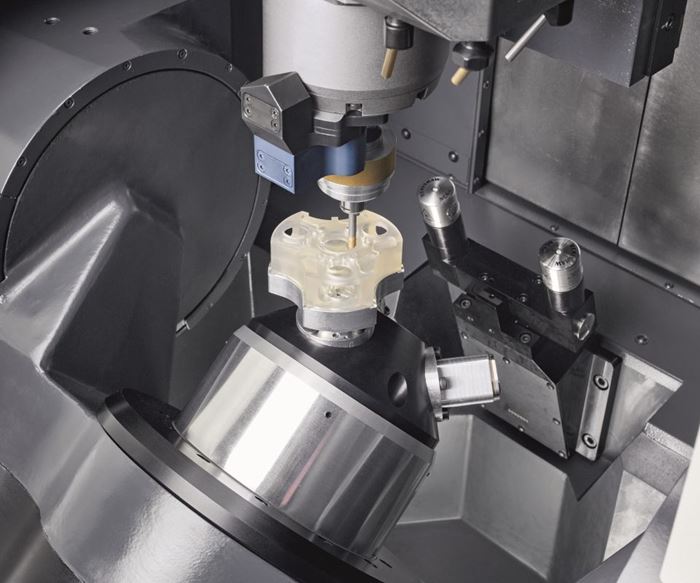
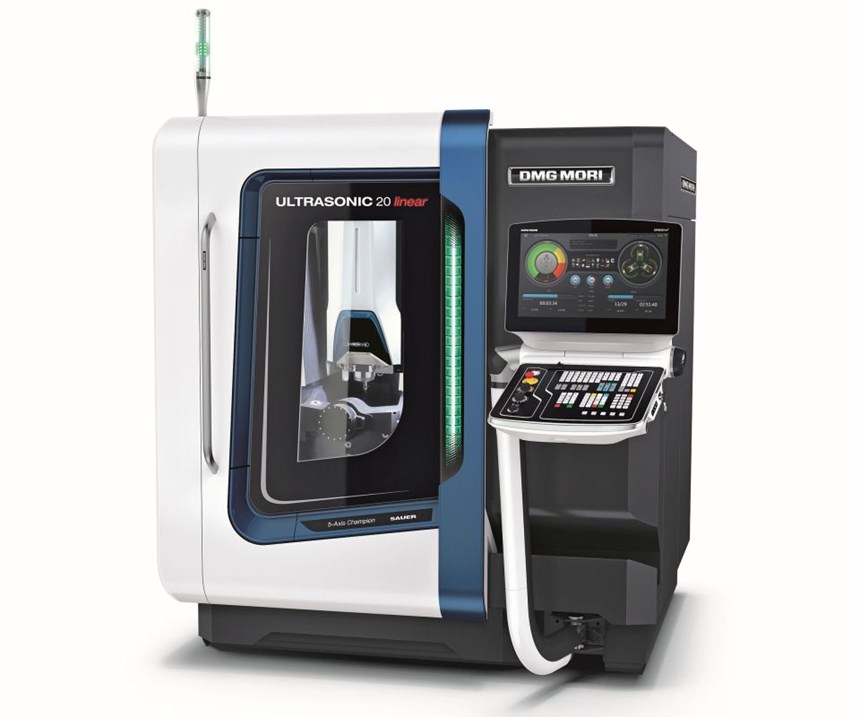










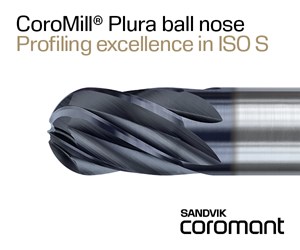
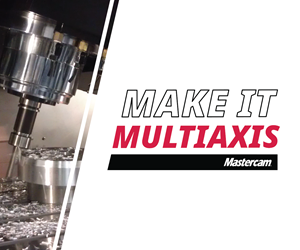


.png;maxWidth=300;quality=90)



